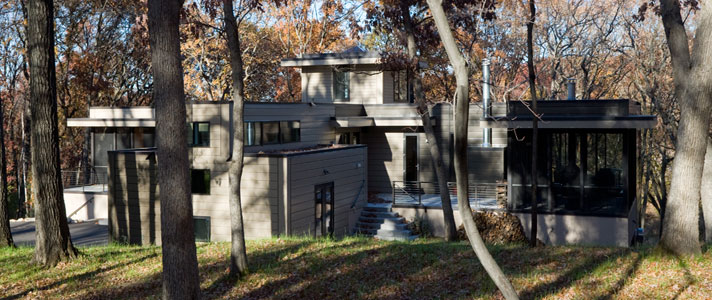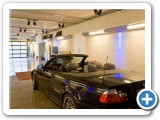|
Beyond LEED Close Associates has been about energy efficiency, low maintenance/ impact building since our founding. We can get you LEED Certified but we strongly suggest going beyond LEED (and saving the expense) by incorporating systems and products that truly save on maintenance and operating costs. We advocate testing at completion to be sure your building performs as planned. One of Win and Lisl Close’s first buildings in 1938 was Skywater, an earth sheltered cabin on the St. Croix River. Close Associates’ Office here on Franklin is over 60 years old but its exterior redwood has never needed paint/stain or replacing. The floors are concrete plank (like many Close houses) which provides a built in heat sink, comfy floors, and no metal ductwork since the heat/cooling is directed through the cores in the planks. The lighting is highly efficient 8’ fluorescents behind hinge down screens of lampshade paper. The 1978 Seward Earthsheltered Townhomes are a dramatic example of active and passive solar collection and earth sheltering that insulate from temperature swings and the noise of the freeway next door. Authored by Seward resident Mike Dunn who went from Architecture student to our employee, the project received international attention. We are always looking for new products that serve multiple needs, or old products that can be used in new ways. Rolling insulated shutters first came to our attention in the late ‘70s. We used them on Tuttle/Marcy Public School in Southeast Mpls. because they doubled the insulation value over the new insulated glass and allowed us to keep the original full height windows for maximum day lighting. They also acted as black out and sun shades, replacing the necessity for those two troublesome, traditional classroom shading systems. In 1980, our Ronald McDonald House was one of the first super insulated projects in the Twin Cities. Rrolling, insulated shutters were again a hit for parents trying to regain sleep in the day. The owner has mandated them on every construction phase since then. A little later, I experimented w/ the Mercil House and Camp Greenwood for the Mpls. Girl Scouts where the plumbing cores (kitchens and bathes) were super insulated and separately heated. Less freeze critical areas were wrapping around the cores. Both buildings were further secured/insulated with two different types of insulating shutters since window openings are by far the largest heat loss areas. Over 25 years after its construction, the Tubman Alliance building is still featured by Xcel Energy on their website to highlight the success of their Energy Assets Program. Back then we started saving Tubman an additional 25% above their high efficiency targets by focusing on better lighting controls. We always recommend to our owners that an (inexpensive) exfiltration test be performed after the vapor barrier is in place and before the final wall/ceiling finishes. This allows for easy sealing of the leaks that rob a building of warm (moist) air that can be a major source of mold. Many of the most basic tenets of Green/Sustainable design haven't changed since the Closes started teaching them to some of us forty years ago: proper positioning of building on the site, minimum exposure on the north, openings on the south with sun shading that blocks the summer sun and welcomes it it in winter, flat roofs for water control and insulation w/o venting and ice dams, etc. I hope this gives you a good sense of our experience and long held advocacy for this approach to architecture. | ||||||















